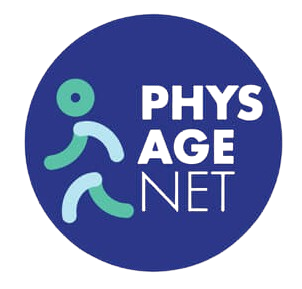PHYSAGENET (CA21170) - Network on evidence-based physical activity in old age (PhysAgeNet)
Project ID
2020-2.1.1-ED-2024-300
Project title
Network on evidence-based physical activity in old age (PhysAgeNet)
Project manager, contact details
Bernadett Balázs-Barnaki, barnaki.bernadett@pte.hu
Academic supervisor, contact details
Dávid Paár Dr., david.paar@etk.pte.hu
Total project budget
No data
Total budget of UP
50.000.000 HUF (CUPID, PRAGMATICK, PHYSAGENET)
Project start date
Project end date
Coordinator
Prof. Michael Brach



Partner Organisations
No data.
General description
A sedentary lifestyle in old age is associated with increased risk of chronic and disabling diseases, premature mortality, and substantial economic burden for society. Increase in physical activity (PA), on the other hand, may compensate negative effects of ageing and reduce inactivity costs. However, not all exercise regimens are universally effective, and inter-individual differences in responses to PA exist. Therefore, there is an urgent need for creating “tailored” exercise programmes that will fit the specific needs of the various and diverse ageing populations.
A critical step towards this goal is embracing an evidence-based medicine (EBM) approach where conceptual challenges and pitfalls in basic research and clinical research on ageing and physical activity could be identified and addressed. Unmet needs and gaps in research and practice that currently hinder successful implementation of EBM for training of older adults are:
1. Lack of consolidated research information needed for designing optimal, feasible and effective exercise programs for various target groups
2. Exclusion of disabled, low income and isolated older adults both research trials and exercise interventions
3. Lack of real-world conditions studies over long periods
4. Limited use of technological innovations for assessing, applying and enhancing exercise programs in old populations.
Program
COST Action
Application monitoring
